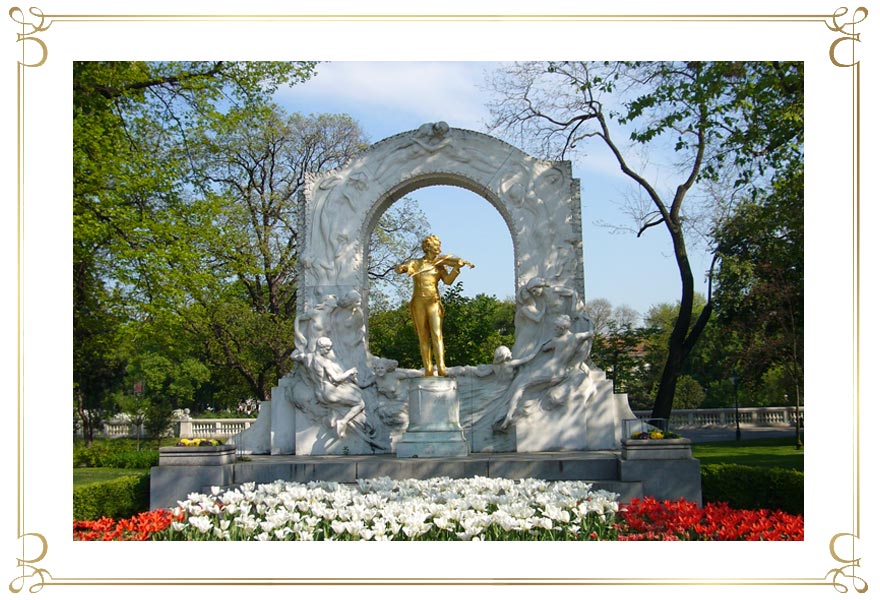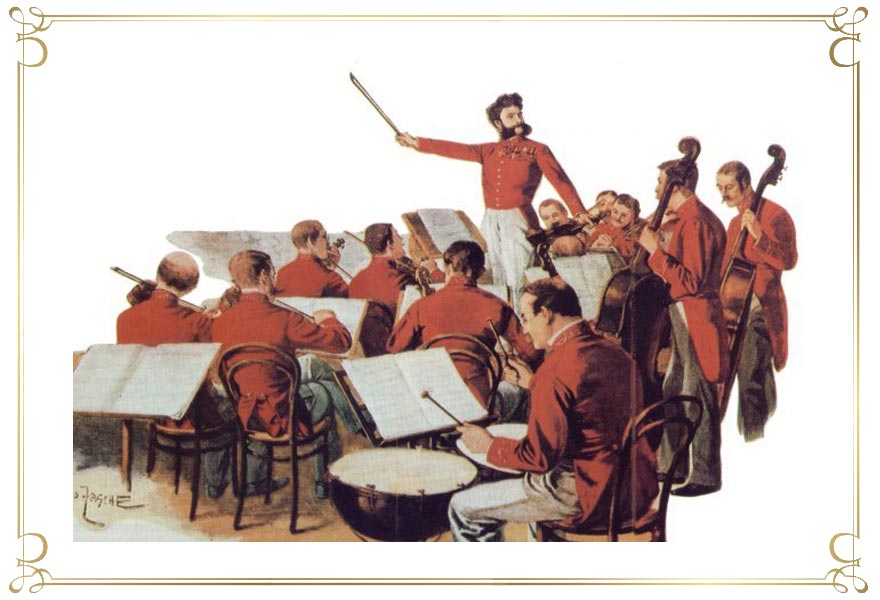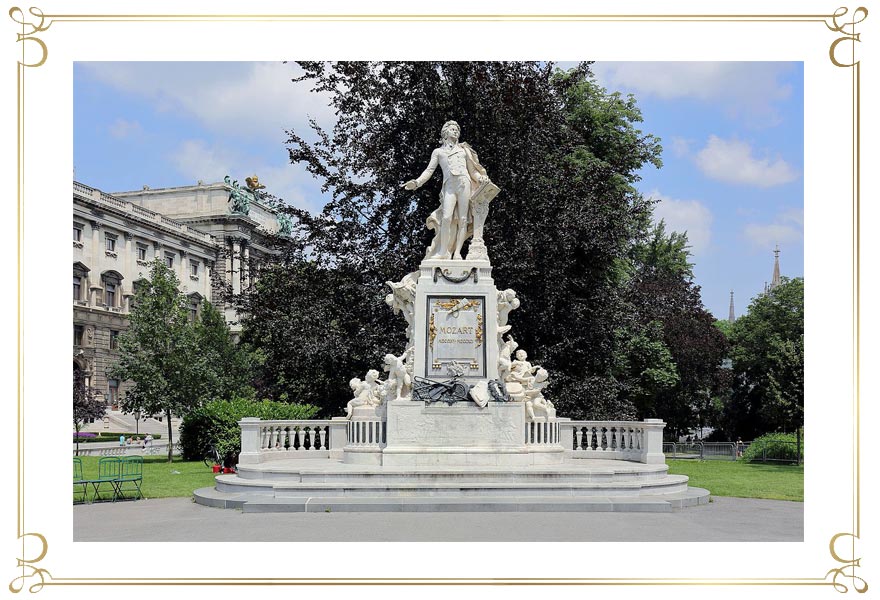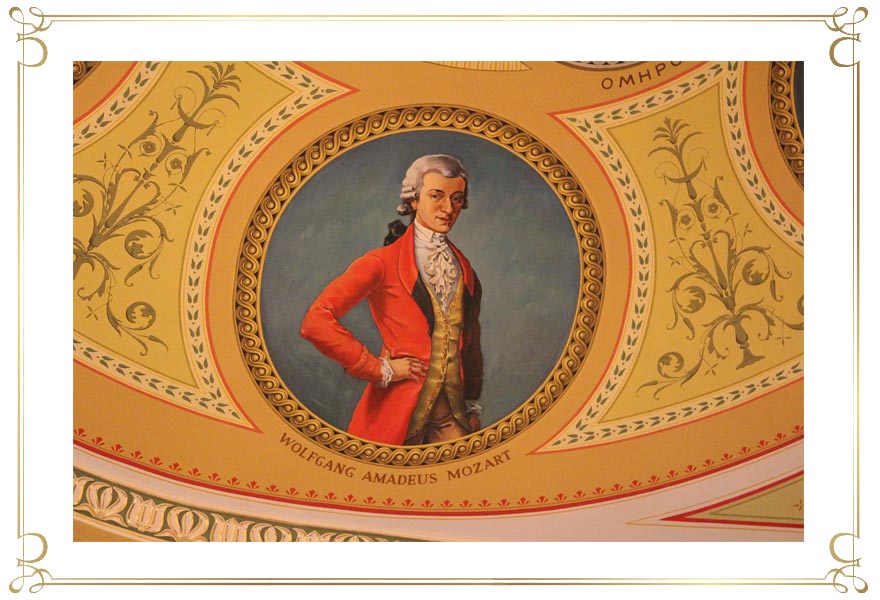At the age of 13 the Salzburg Archbishop Siegmund Graf Schrattenbach accepted Wolfgang into the Hofkapelle (court orchestra).
Having traveled the world Wolfgang felt constricted in Salzburg and dreamt of being employed at a large court. Many years of efforts to achieve such as status were however unsuccessful. Since 1772, a new Archbishop Hieronymus Colloredo had reigned in Salzburg and his relation to the Mozarts was increasingly strained. During a stay in Vienna the conflict escalated when a servant of the Archbishop kicked Wolfgang, and young Mozart then terminated his employment at the Salzburg Hofkapelle (1781).
Although without income for a while, Wolfgang was a happy man as he was in love. One year later he married Konstanze Weber, who in fact was the sister of his first tempestuous love Aloysia, a girl with whom he originally had planned his future at the age of 22, four years previously.
Shortly before his wedding the opera “Die Entführung aus dem Serail“ (The Abduction from the Seraglio) premiered. At the end of 1784, Wolfgang Mozart joined the freemason lodge „Zur Wohltätigkeit“.
The wedding plans did not suit both families, but they were a fitting couple and their 9-year marriage was harmonious, although it was clouded by the death of 4 out of 5 children and Konstanze’s severe illness that broke out 1789.
Within a short time Mozart managed to become the most popular and highest paid musician in Vienna.
Kaiser Josef II was Mozart’s special patron, also bonded by their masonship. Mozart’s suggestion to write an opera about aristocratic privileges and feudal arbitrariness is a sure sign that he was aware of the Emperor’s political intentions.
Josef II was in the process of curbing the aristocrats’ powers to centralize authority in himself…. Mid-1786 saw the premiere of “Die Hochzeit des Figaro” (The Marriage of Figaro). The aristocrats in the audience understood the warning and boycotted further performances. However, shortly after the opera was a great success in Prague.
Here Mozart also was requested to write his next opera “Don Giovanni”, that premiered in 1787 in Prague and was enthusiastically accepted by the audience.
The Viennese audience took offense at the plot and considered it to be too rough for the “k. k. National-Hoftheater“ (Royal Theatre). Even the wonderful music couldn’t change that attitude. Opportunism is definitely something Mozart can’t be accused of in any situation in his life.
His next opera “Cosí fan tutte” again provoked a scandal due to the displayed “immorality”. Then the Turkish War that started in 1788 and strongly constricted Vienna’s social life, as well as Konstanze’s illness, led to a financial bottleneck for Mozart.
Although he wasn’t afraid of polarizing the audience with his operas. Mozart was a big star in his time and earned enormous sums. However, his lifestyle was costly and he didn’t waste a thought on savings or provisions. He was generous and often helped friends who needed money, which frequently plunged him into a financial crisis.
Mozart’s final year was one of the most productive and successful years in his life: his income was terrific and he had freed himself from the restraints of the royal court’s commitments. After his patron Josef II died, he turned to the common audience and composed his most famous opera “Die Zauberflöte” (The Magic Flute). The opera wasn’t performed at the Hoftheater (Court Theatre) but at the popular Freihaustheater (today Theatre an der Wien), at the time a suburban stage.
The opera’s fairytale-like storyline is full of symbols and innuendos that convey the freemason’s ideas of Enlightenment. Once again Mozart demonstrated moral courage, as the freemasons were under surveillance by the state police.
The anonymous assignment for a requiem in 1791 later gave reason to speculate about Mozart’s death. The assignment came from Count Walsegg-Stuppach, who planned to stage the piece as his own work. Mozart however only completed a draft of the requiem.
At the end of November 1791 Mozart fell ill and died on the 5th of December at 1am in his apartment in Rauhensteingasse.
Mozart was buried in a common grave which was neither a consequence of his alleged poverty nor of Konstanze’s lovelessness. In fact this kind of burial went back to Emperor Josef II and was common at the time.
Later a monument was erected in St. Marx Cemetery instead of his grave.







